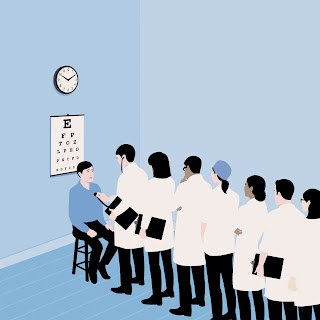 |
| The New Yorker |
The overuse of health care resources is a universal problem that, conceptually, professionals and patients understand easily, but for which there are no simple answers. So we still don't know how to approach it.
In Spain, the collaboration of scientific societies and the Ministry of Health led to the identification of a set of practices (therapeutic or diagnostic indications) that should be avoided (the so-called "Do not do" of the Commitment to the Quality of Scientific Societies initiative), a campaign that sought to increase the quality of health care, reduce unnecessary costs, allocate resources where they were truly needed and do everything possible to avoid a paradoxical situation: that a patient suffered some damage from a treatment or a diagnostic test that was better left undone. In other words, the contrary of quality: do something wrong when there wasn’t any need for it.
The frequency of these “Dont’s" and their cost overruns have been studied in other countries, mainly in the Anglo-Saxon countries. Studies on the frequency with which patients suffer harm in the course of unnecessary treatment, however, have been scarce so far and even less frequent in primary care.
In New South Wales (Australia), the study by Tim Badgery-Parker et al., published in 2019, has revealed what was an open secret: the indications for unnecessary treatments and diagnostic tests are not safe and put at risk to patients. Specifically, the percentage of these unnecessary indications that end up causing harm to patients ranged, in this study, between 0.1%, in the case of endoscopies, and 15%, in the case of neurovascular aneurysm repair.
In Spain, it has recently been pointed out that practices of little value in primary care (related, for example, to the prescription of benzodiazepines, antibiotics, lipid-lowering drugs, paracetamol...) are reluctant to be reduced and affect three out of four patients undergoing treatment. These practices, curiously, affect women more than men, suggesting that there may be a gender bias at the base of some of these indications. In addition, we have verified that 5% of these cases, which should not have occurred according to the recommendations of scientific societies, resulted in avoidable adverse effects. Half of these security incidents caused minor damage with limited impact over time, but almost a quarter had serious consequences.
The “Choosing Wisely” campaign points in this direction and has crossed the borders of the United States and Canada to be implemented in many countries, including Spain. Now, one thing is to identify what should not be done and another to ensure that it will not be done.
The recovery of the health system after the impact of the COVID-19 pandemic will require, among other things, rational use of the resources available. It seems advisable to start down this path as soon as possible and a first step could be to recover the recommendations to implement a High-Value Medicine (Right Care).


No comments:
Post a Comment